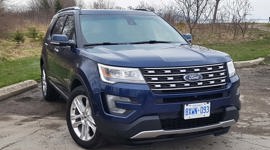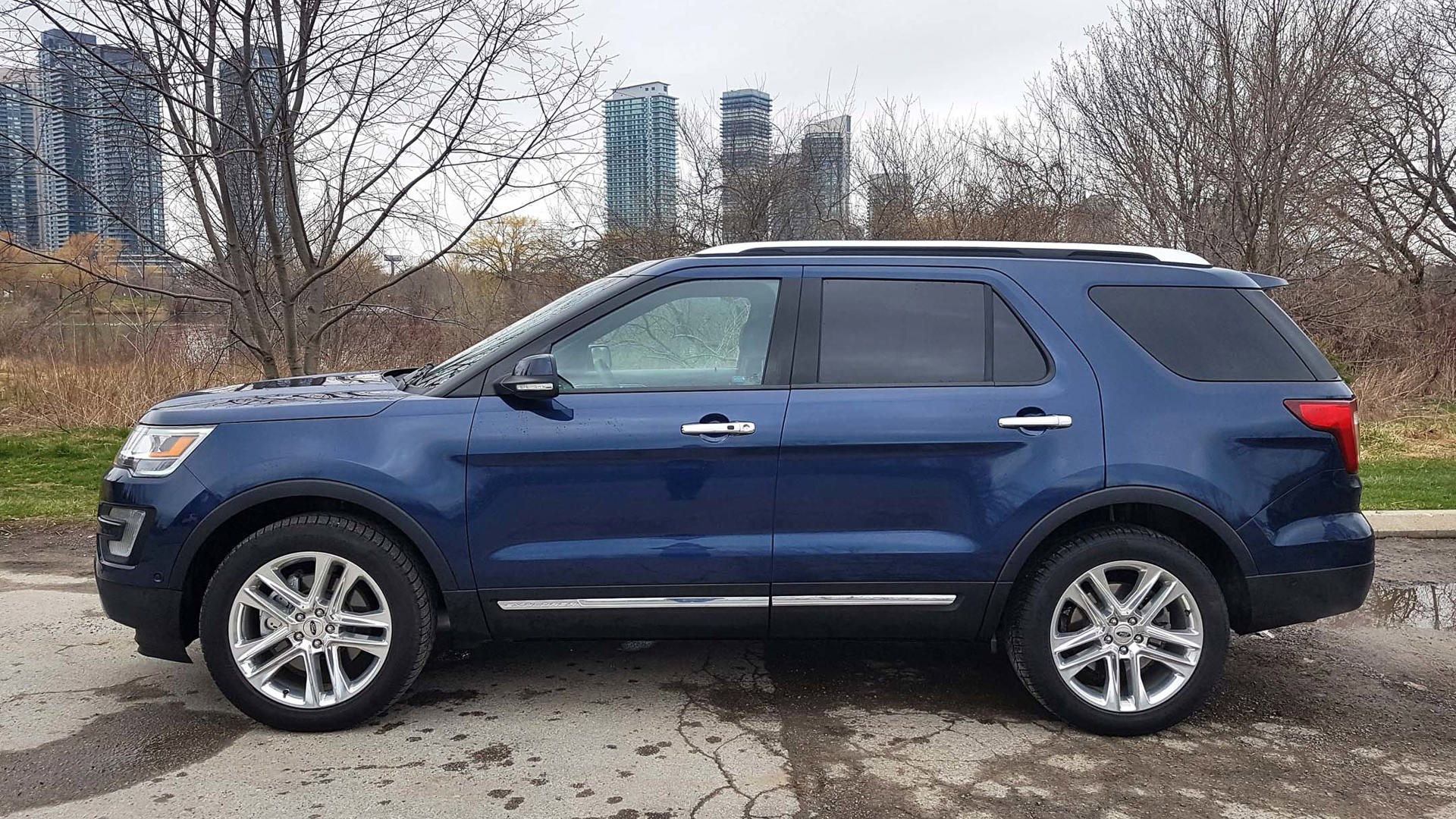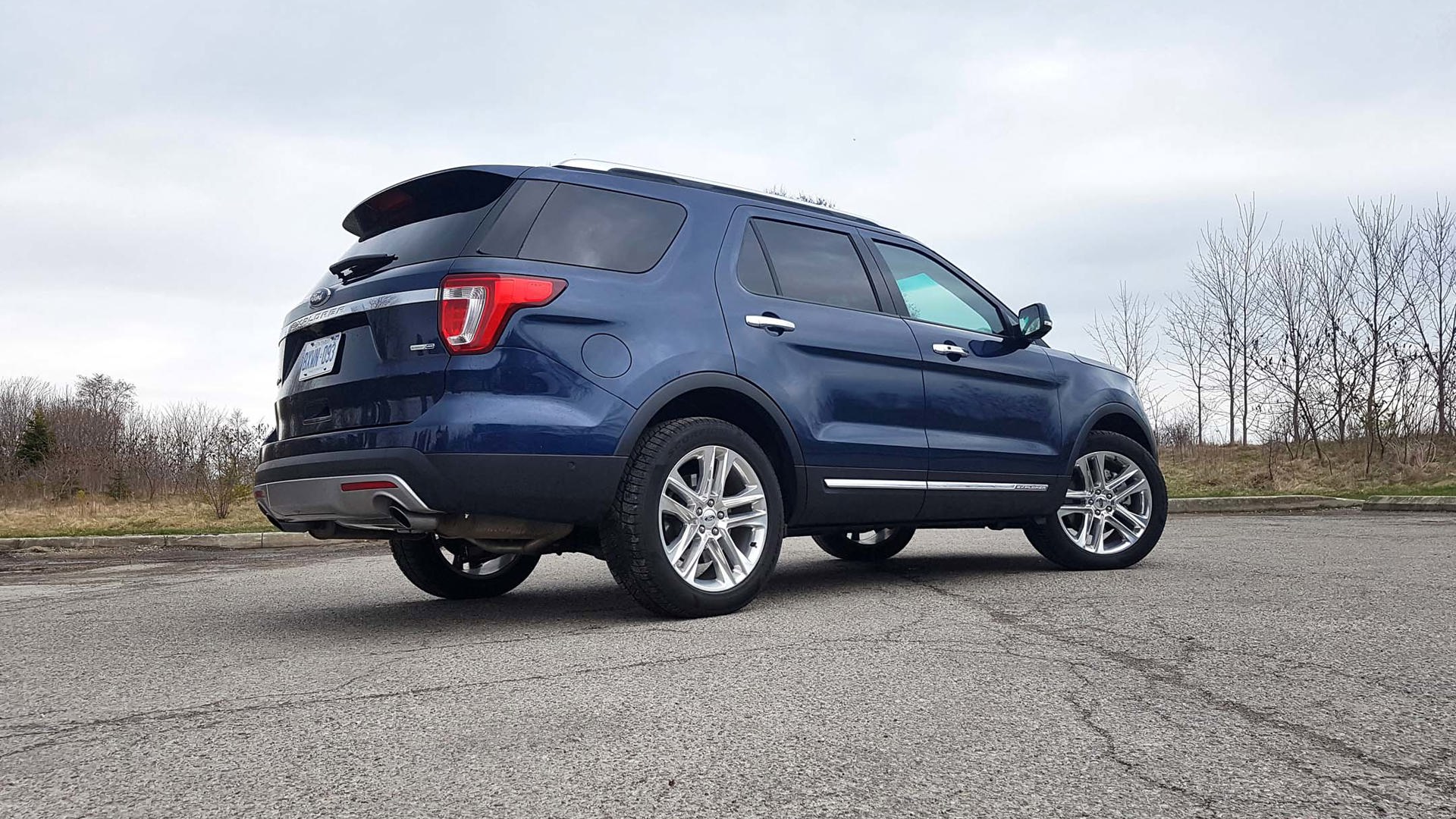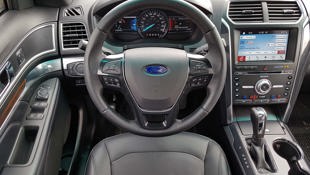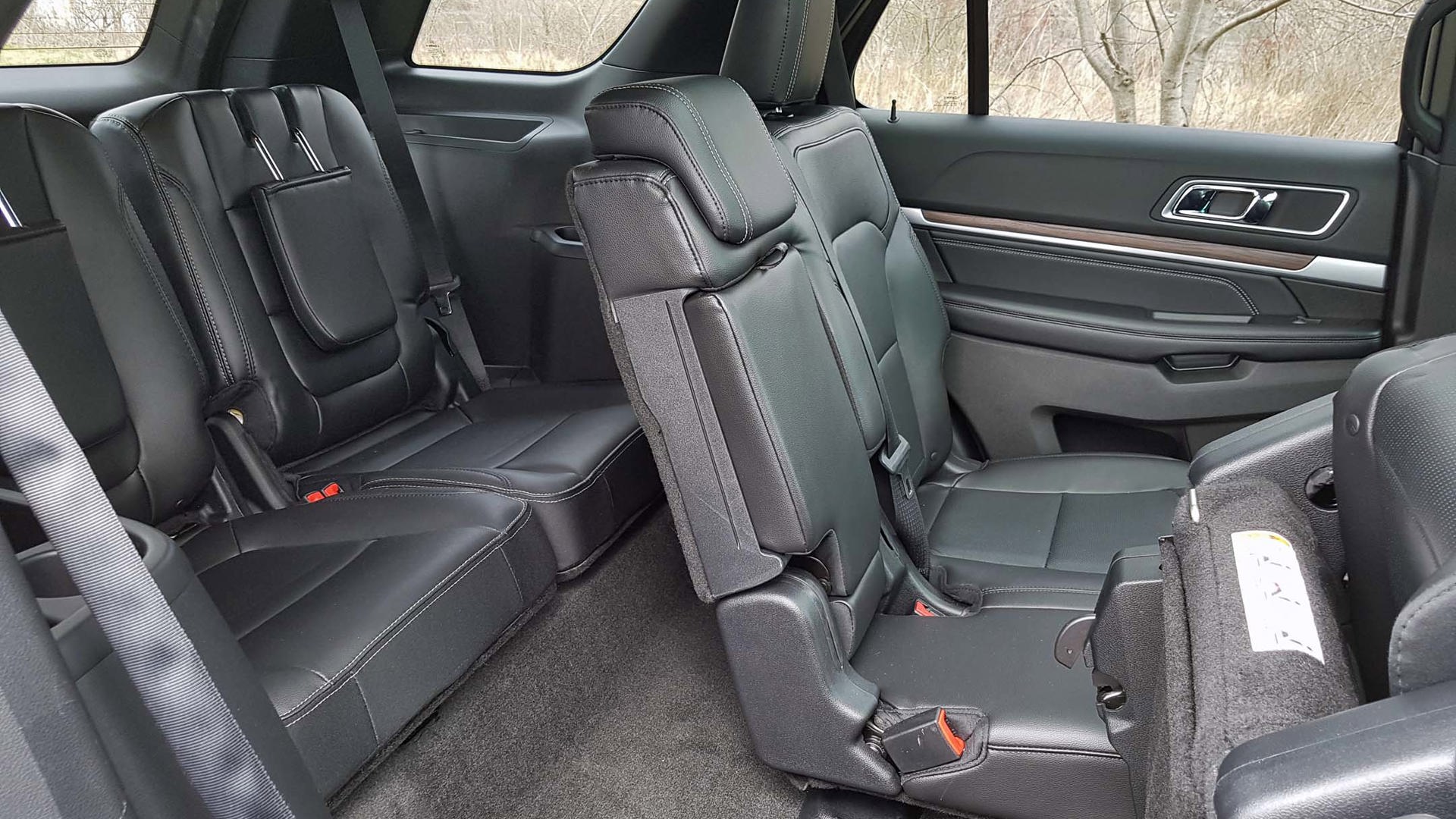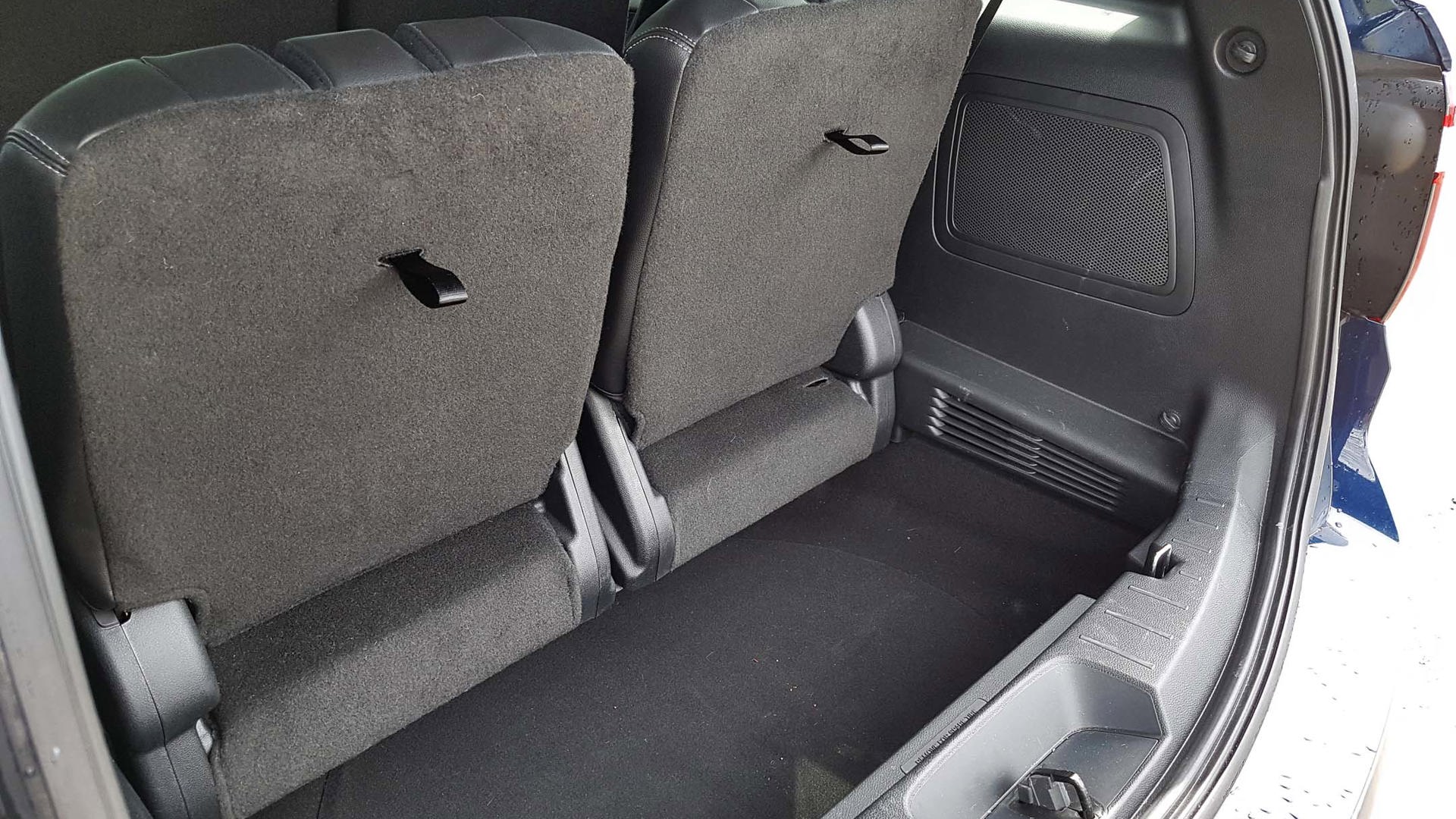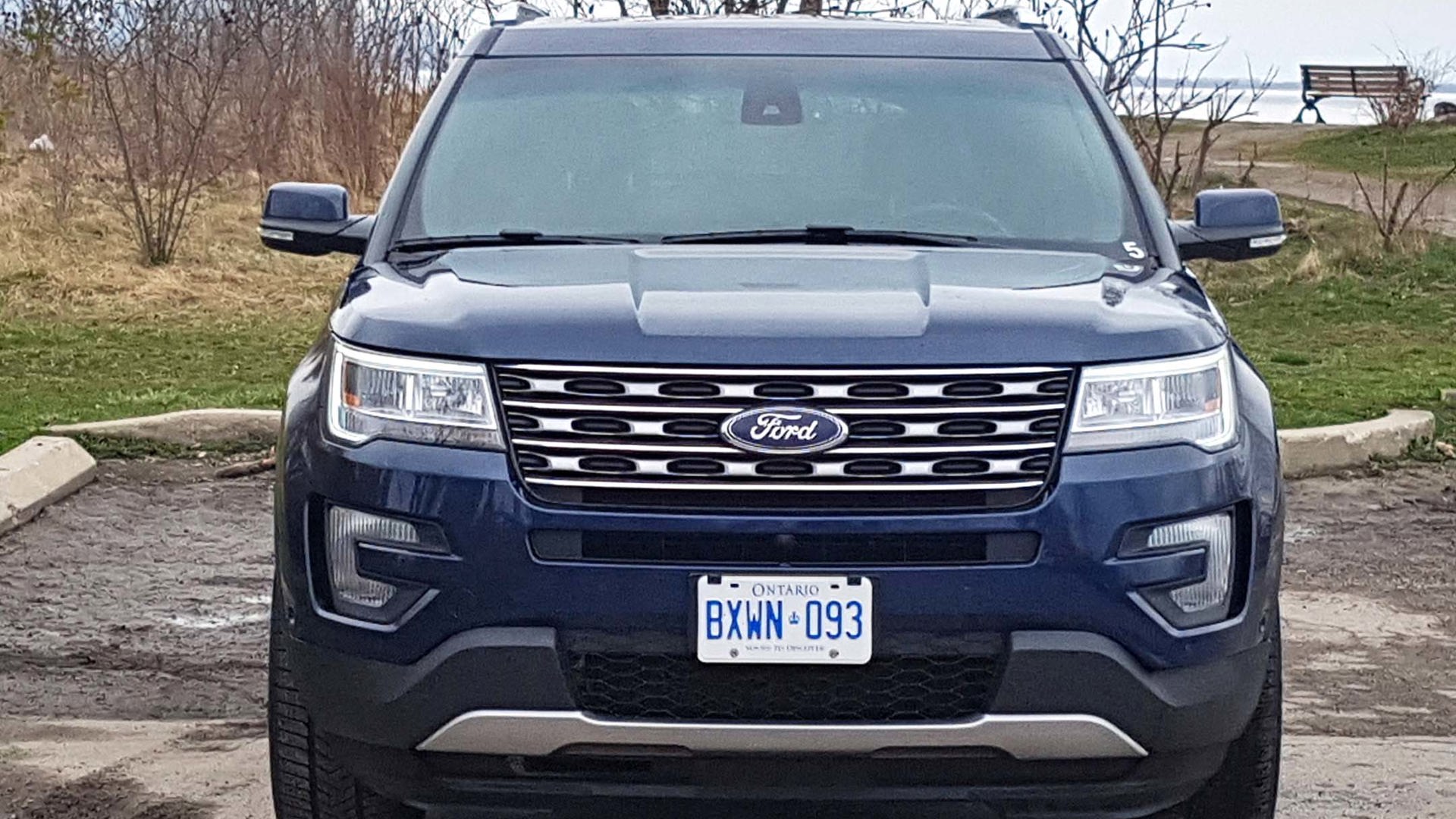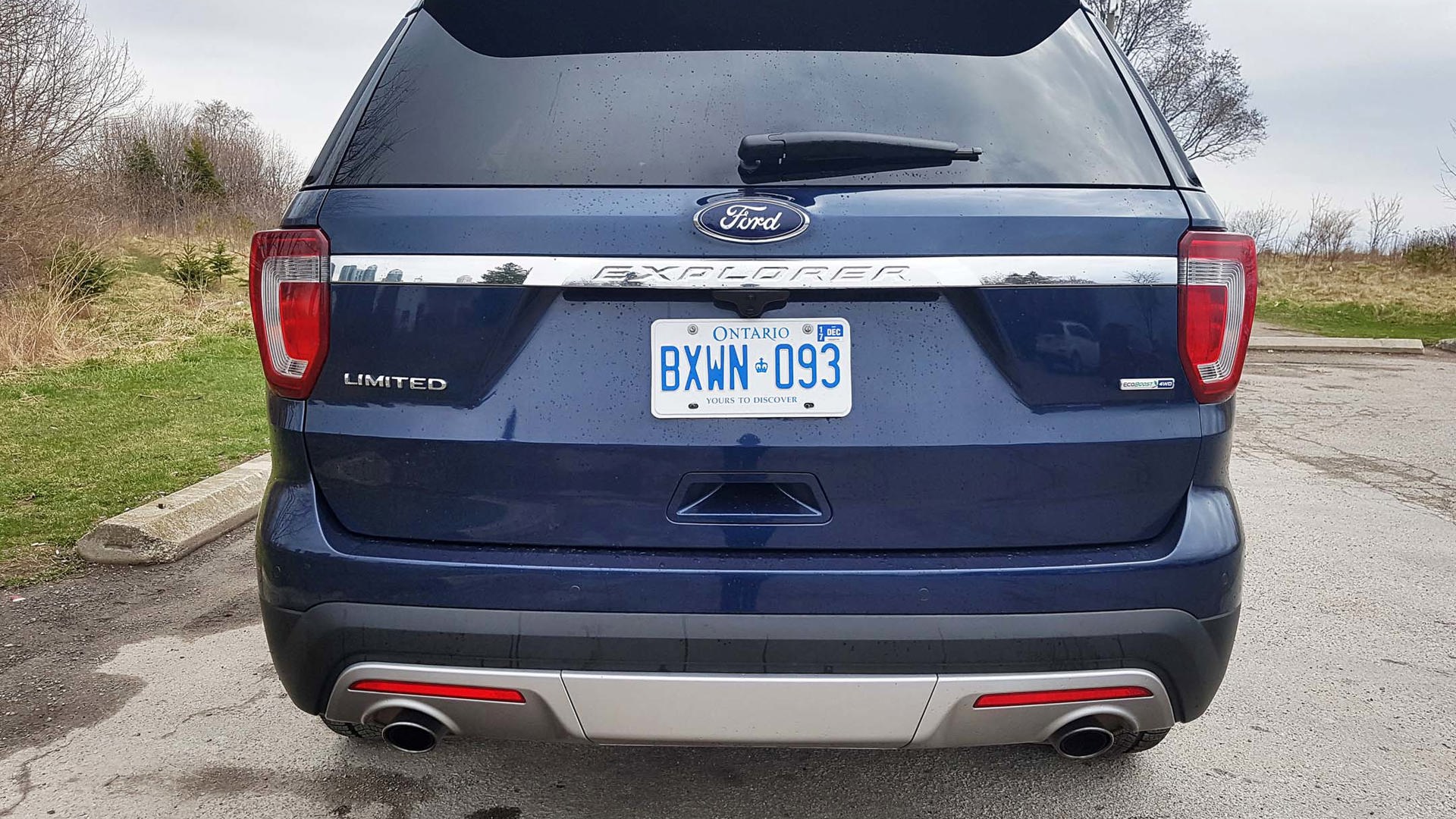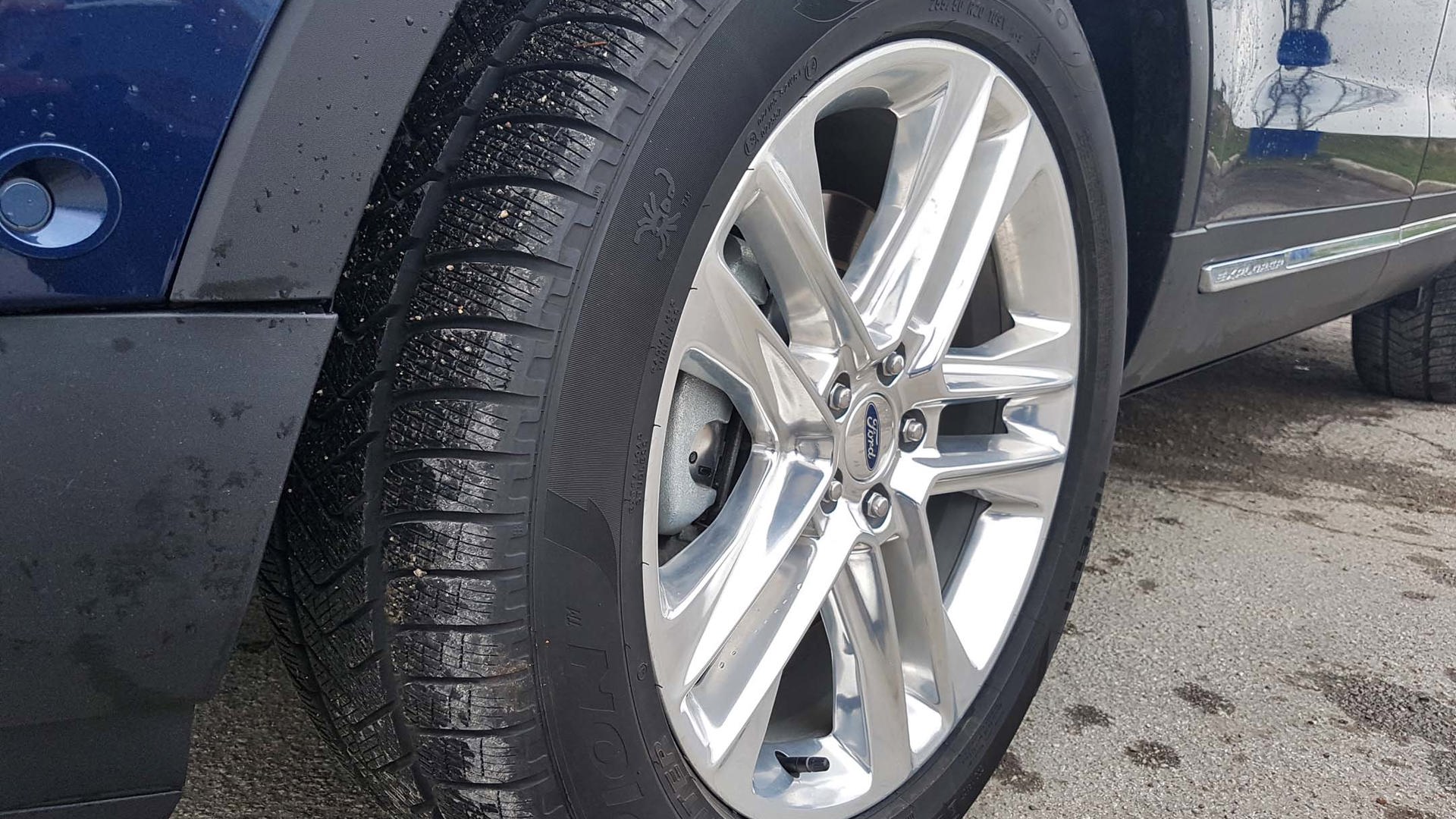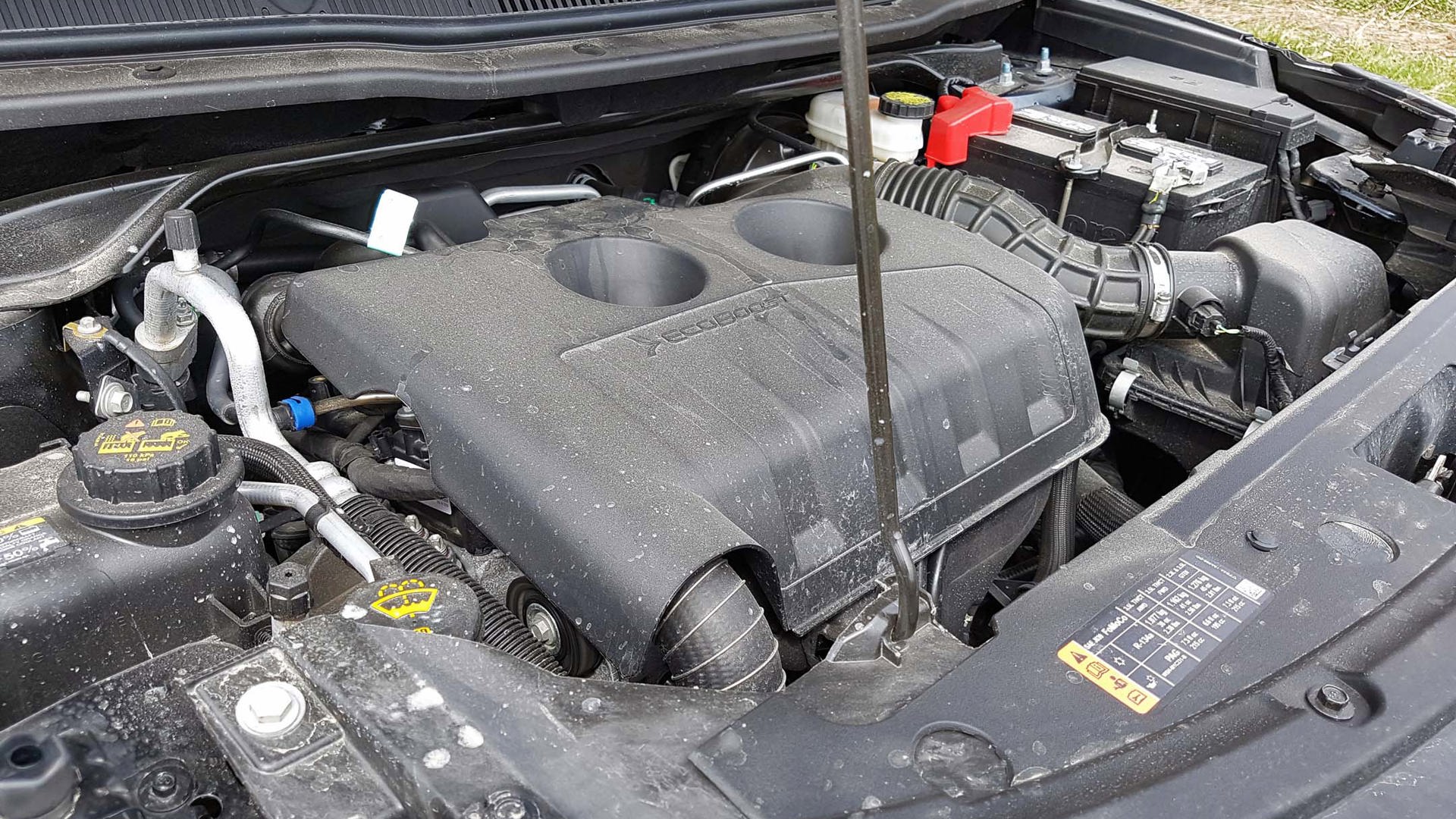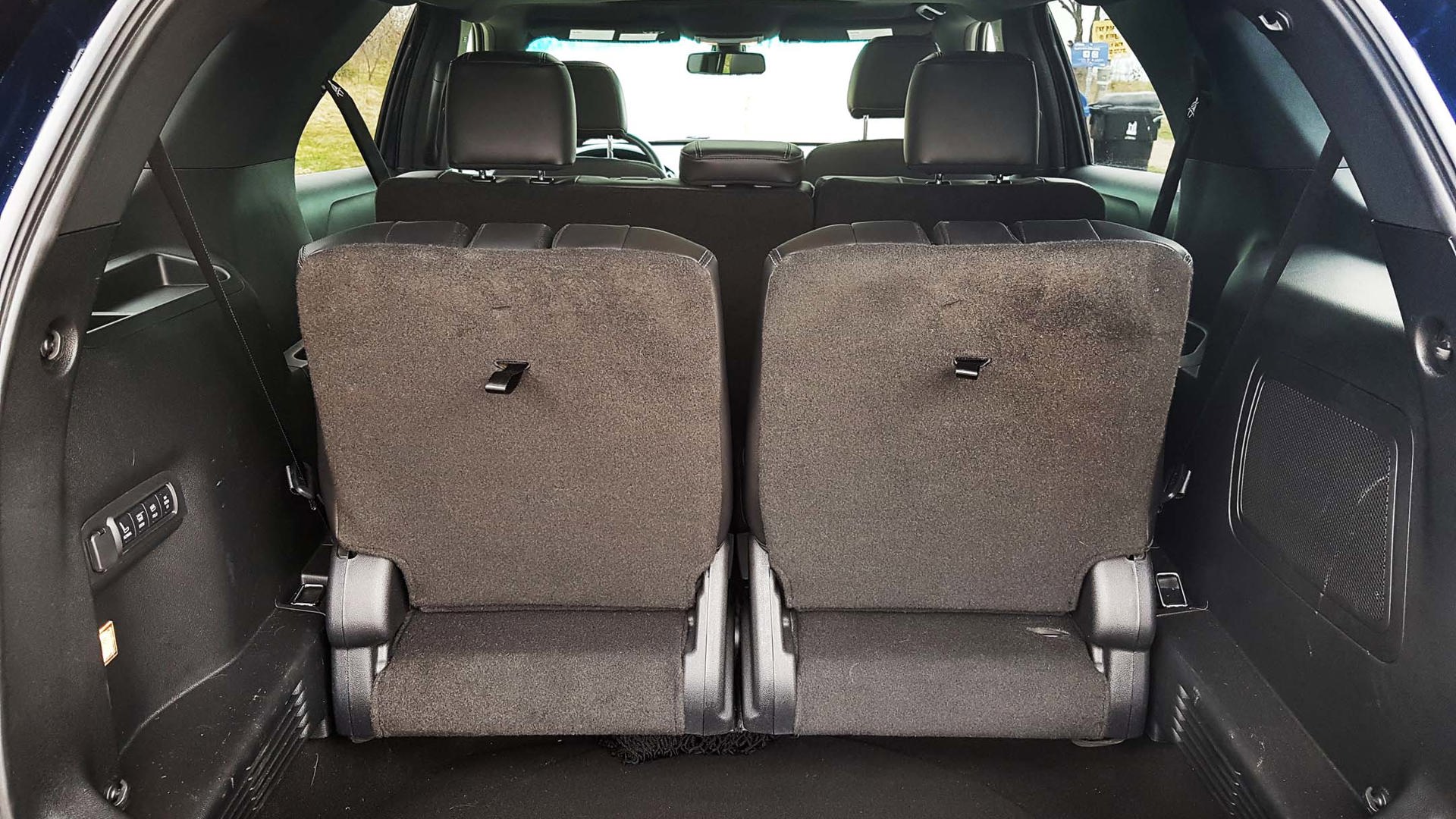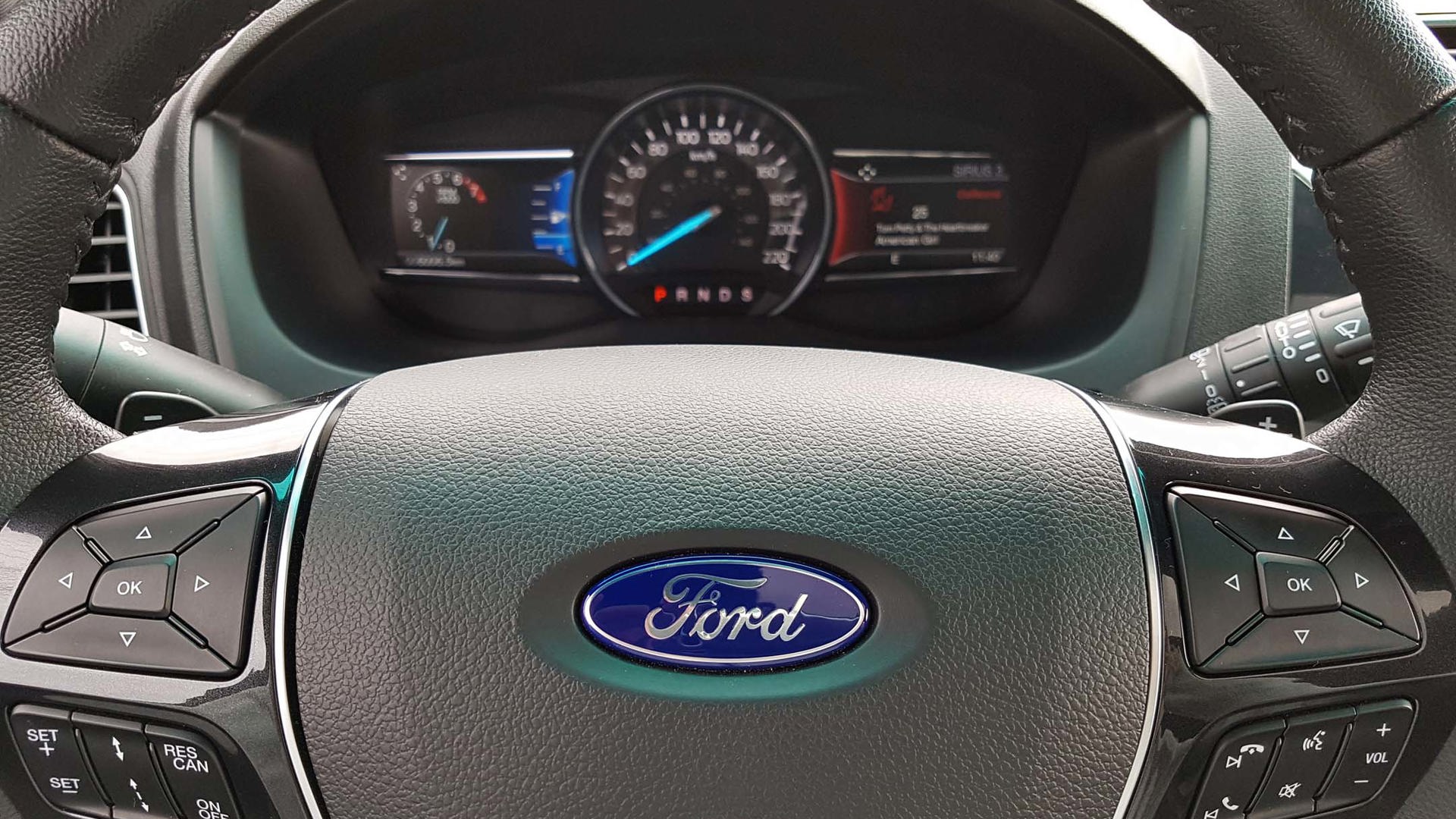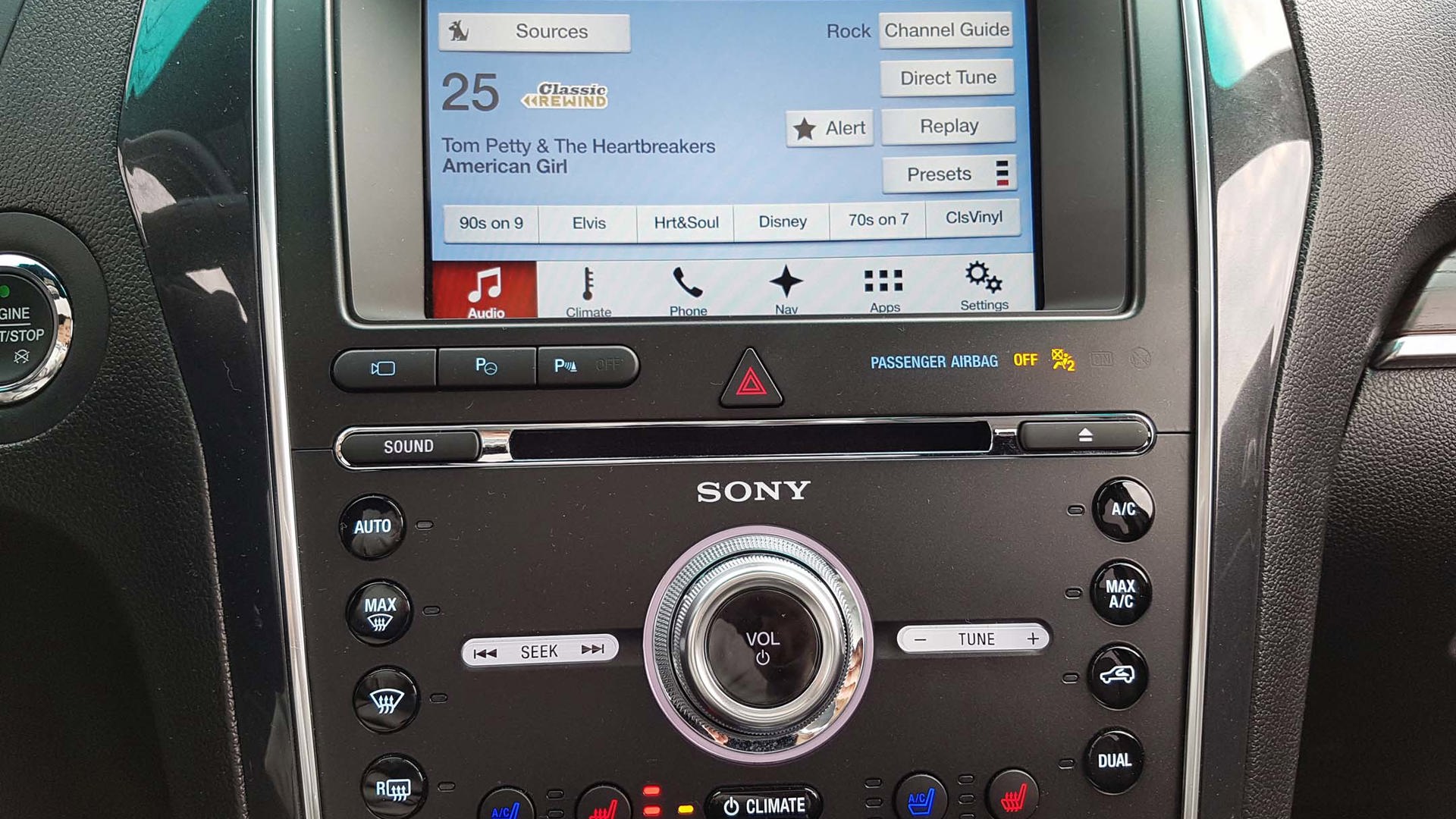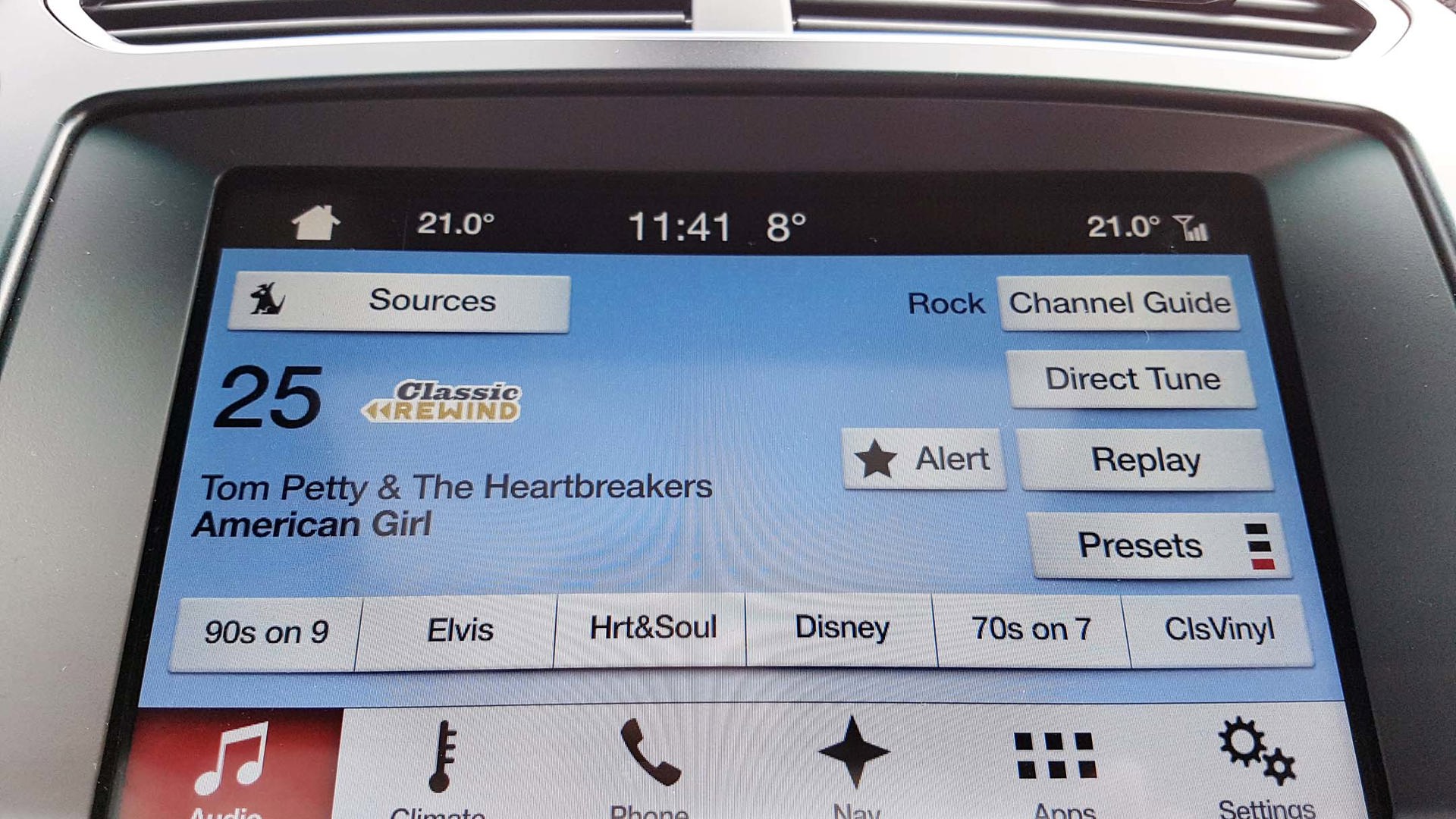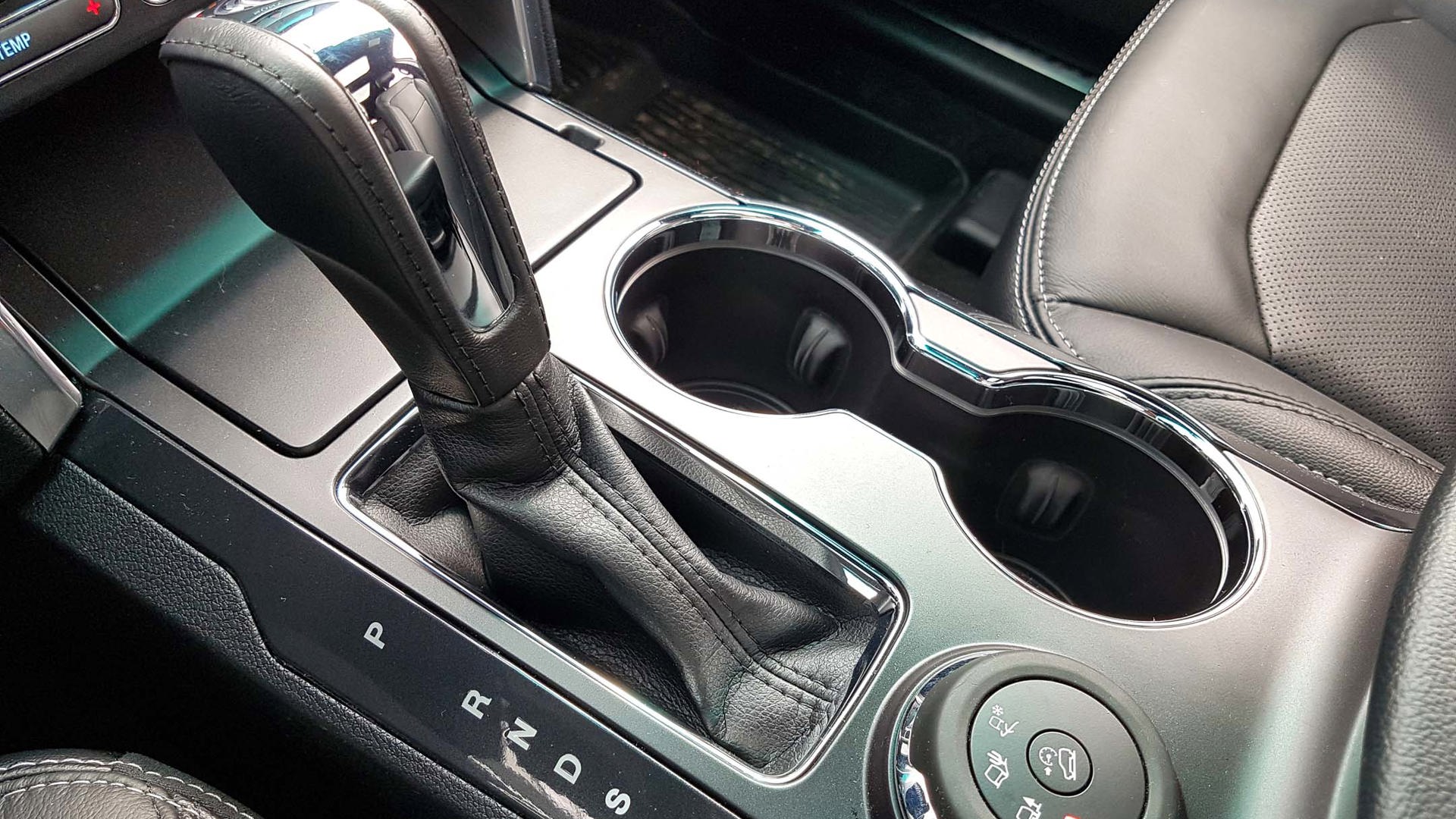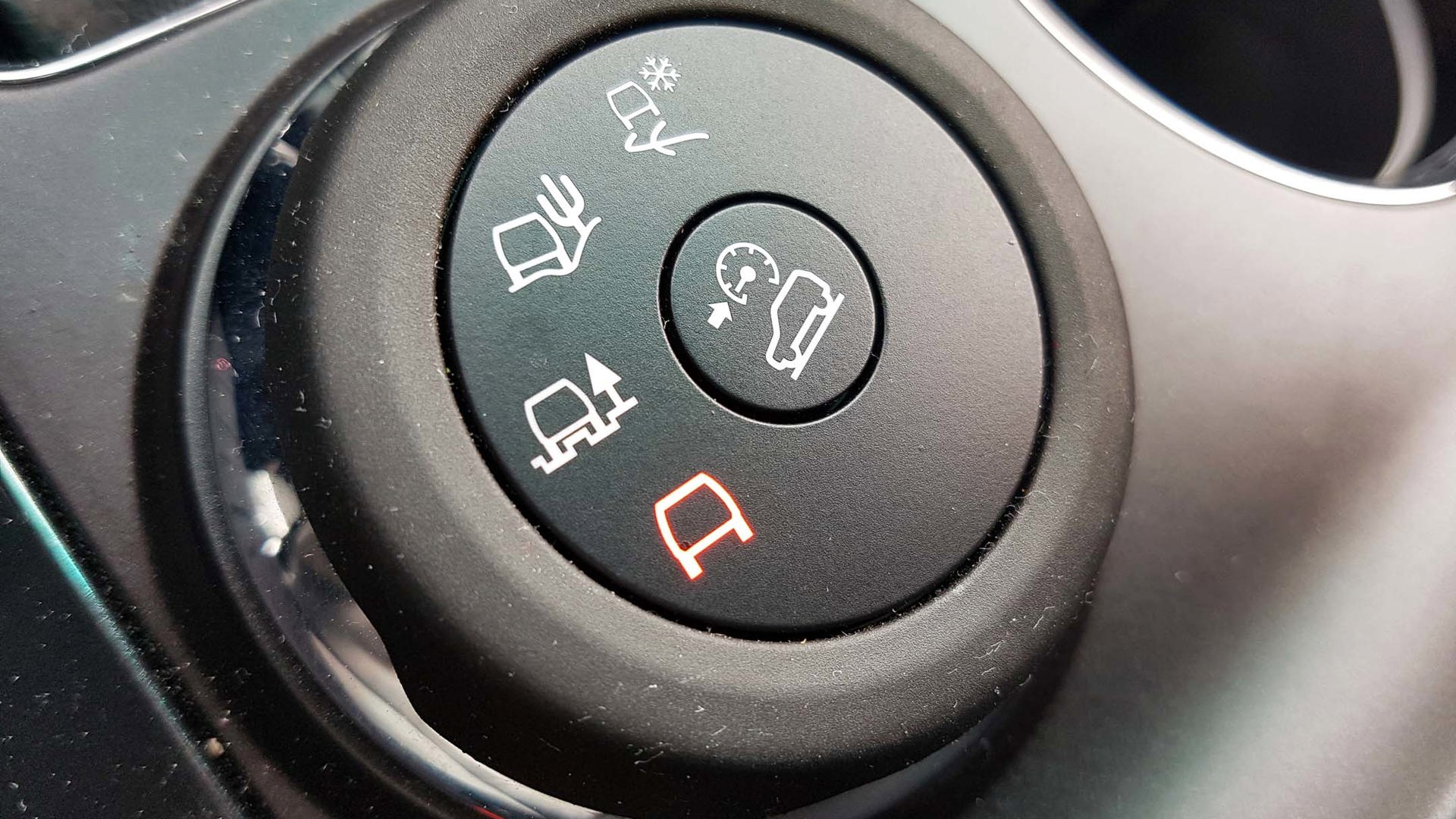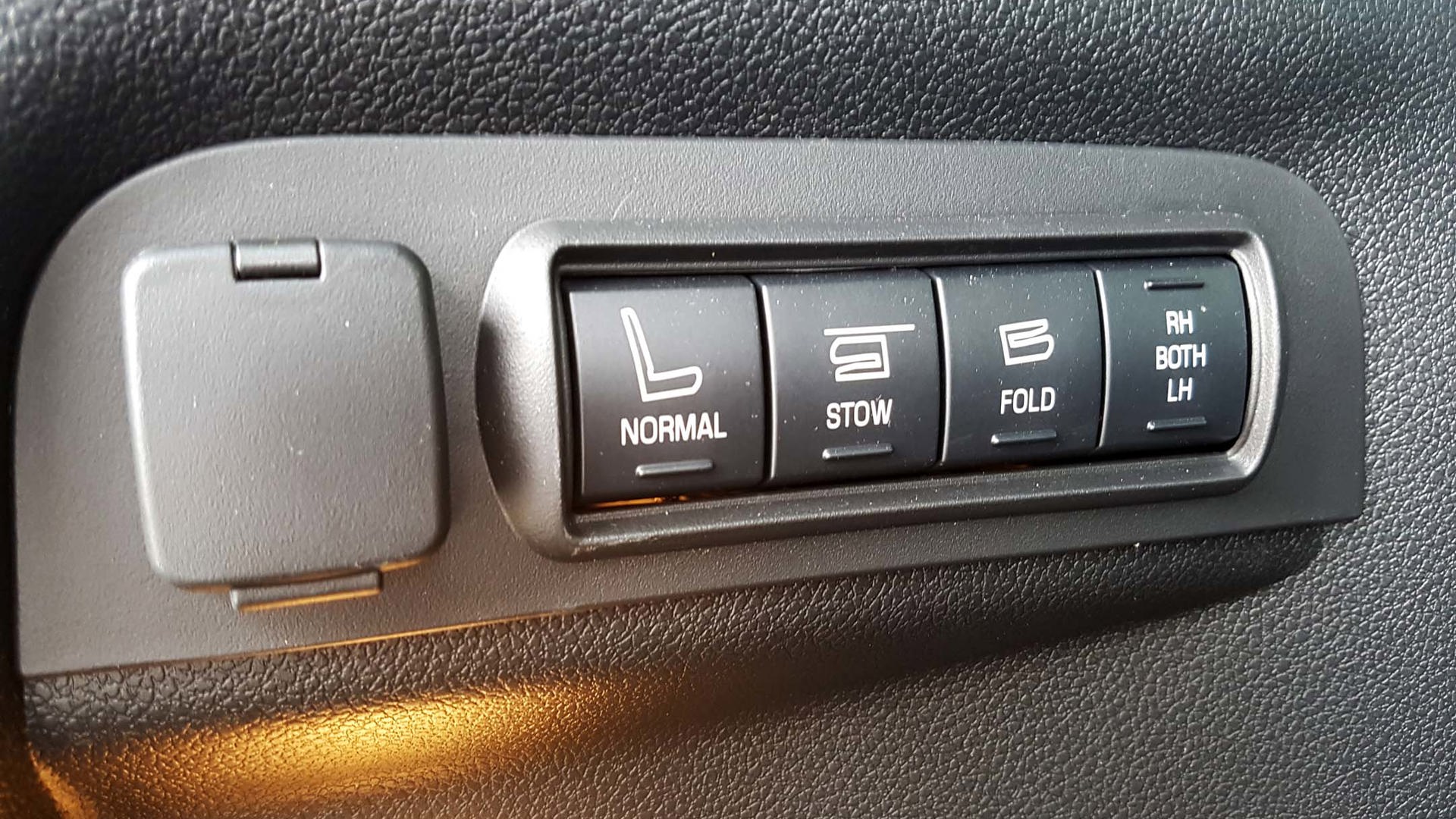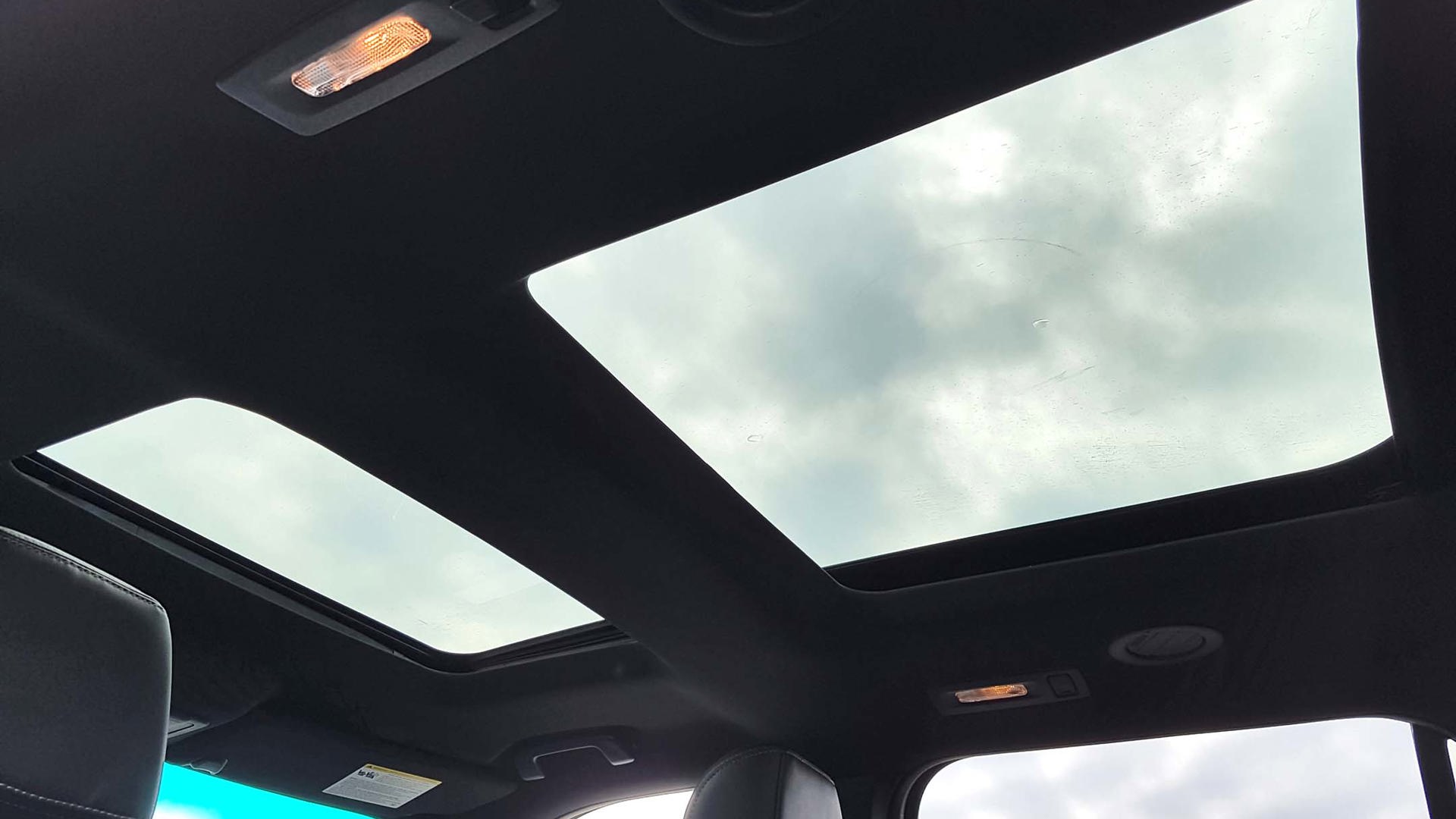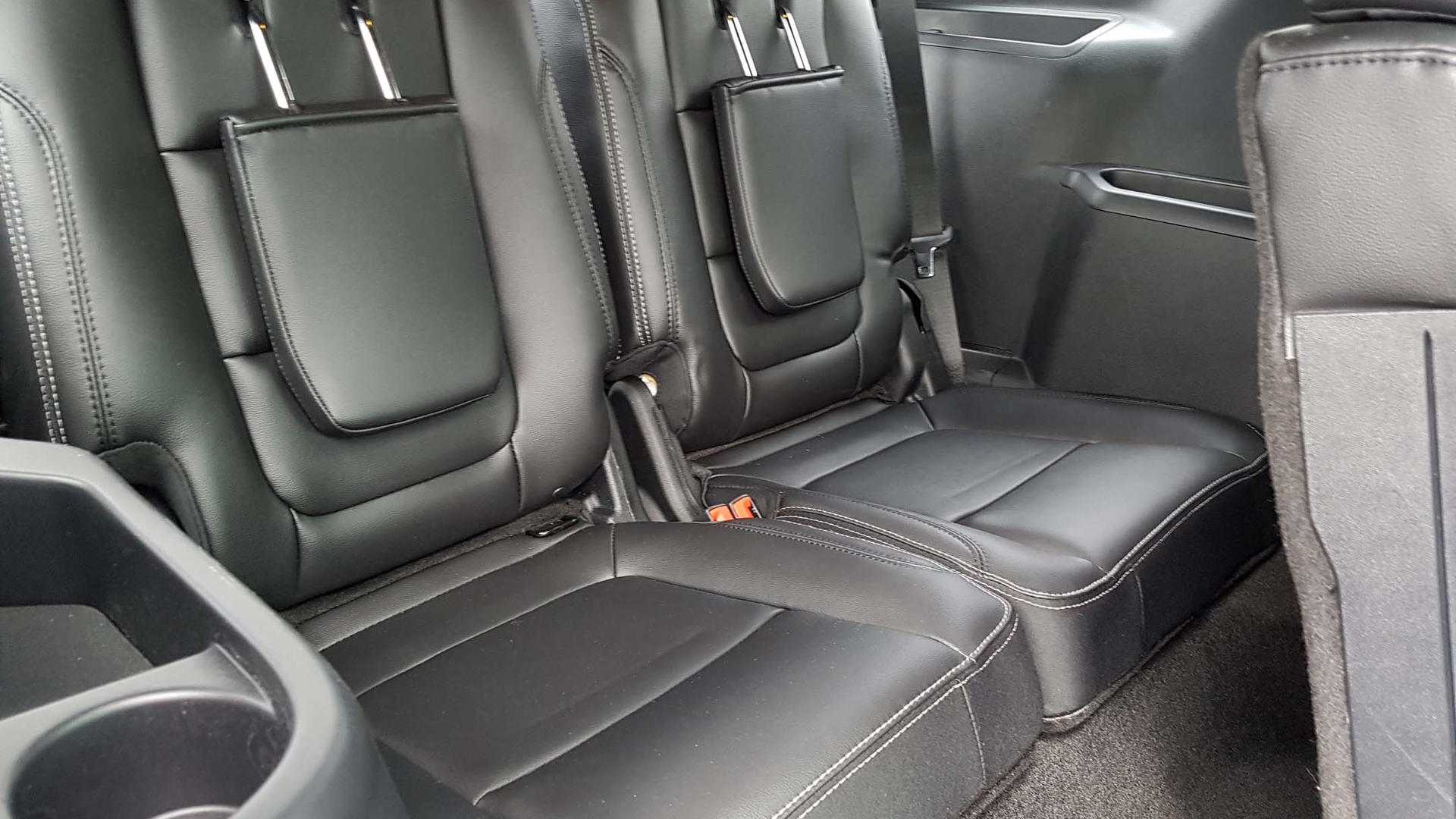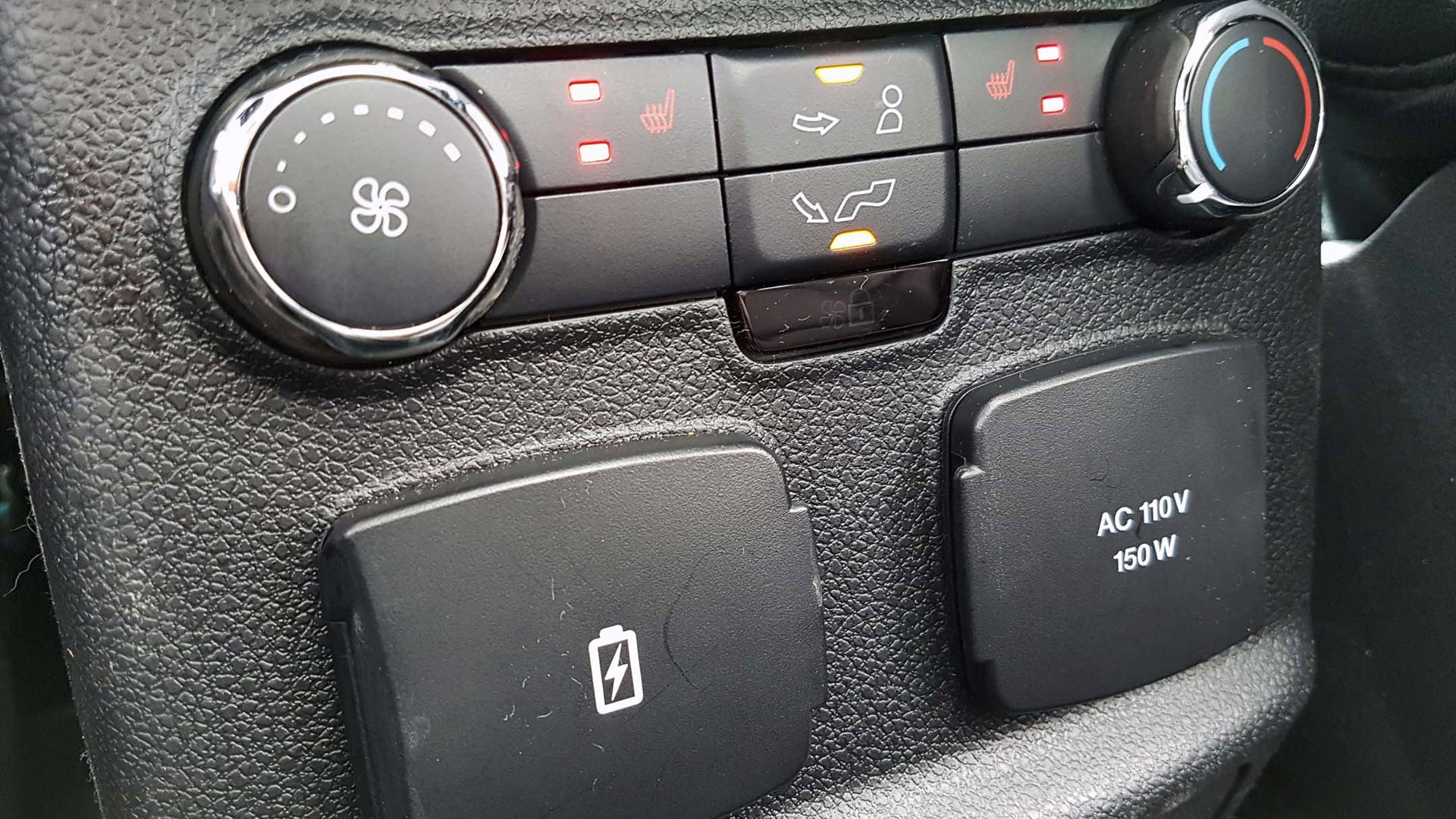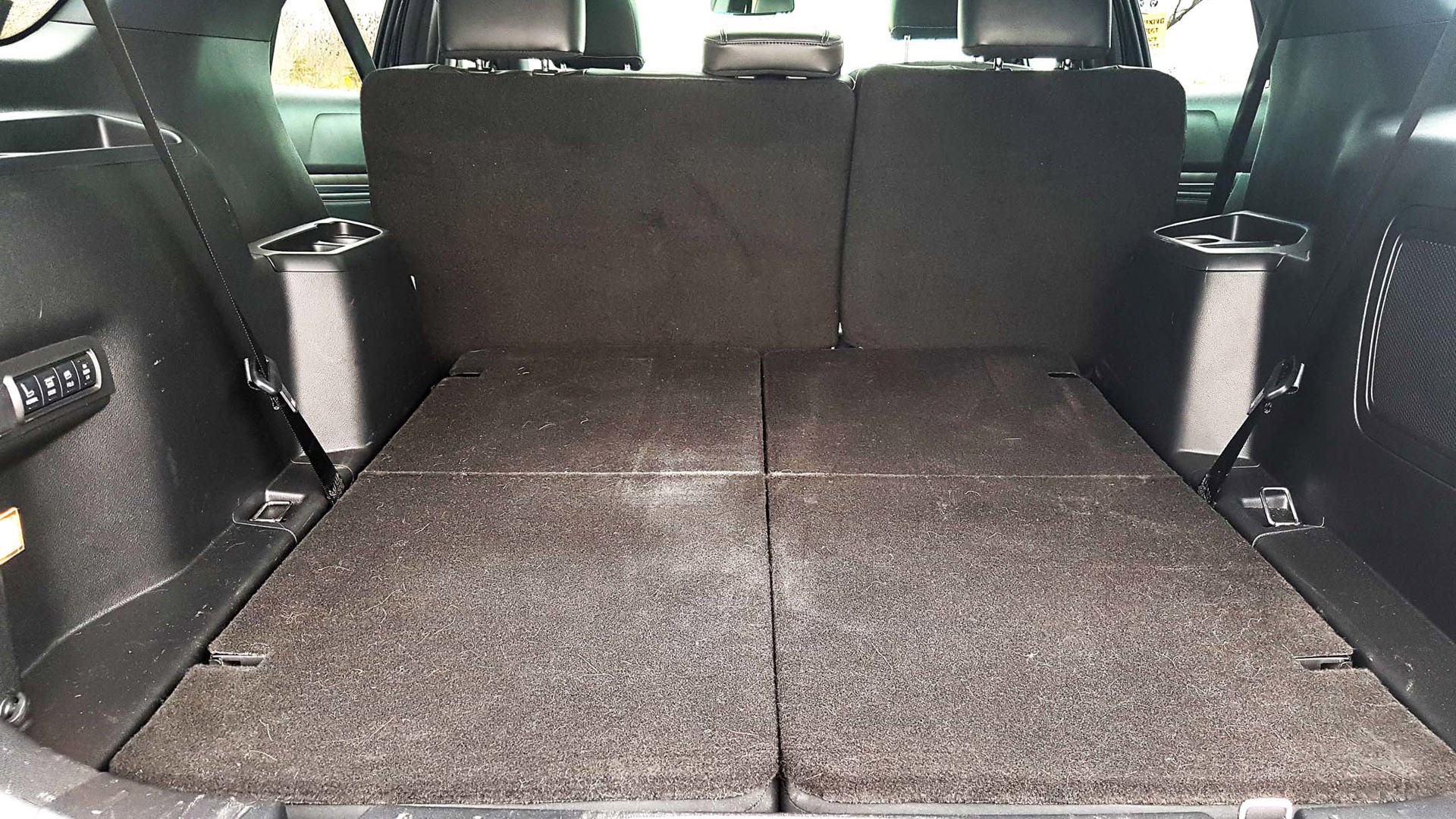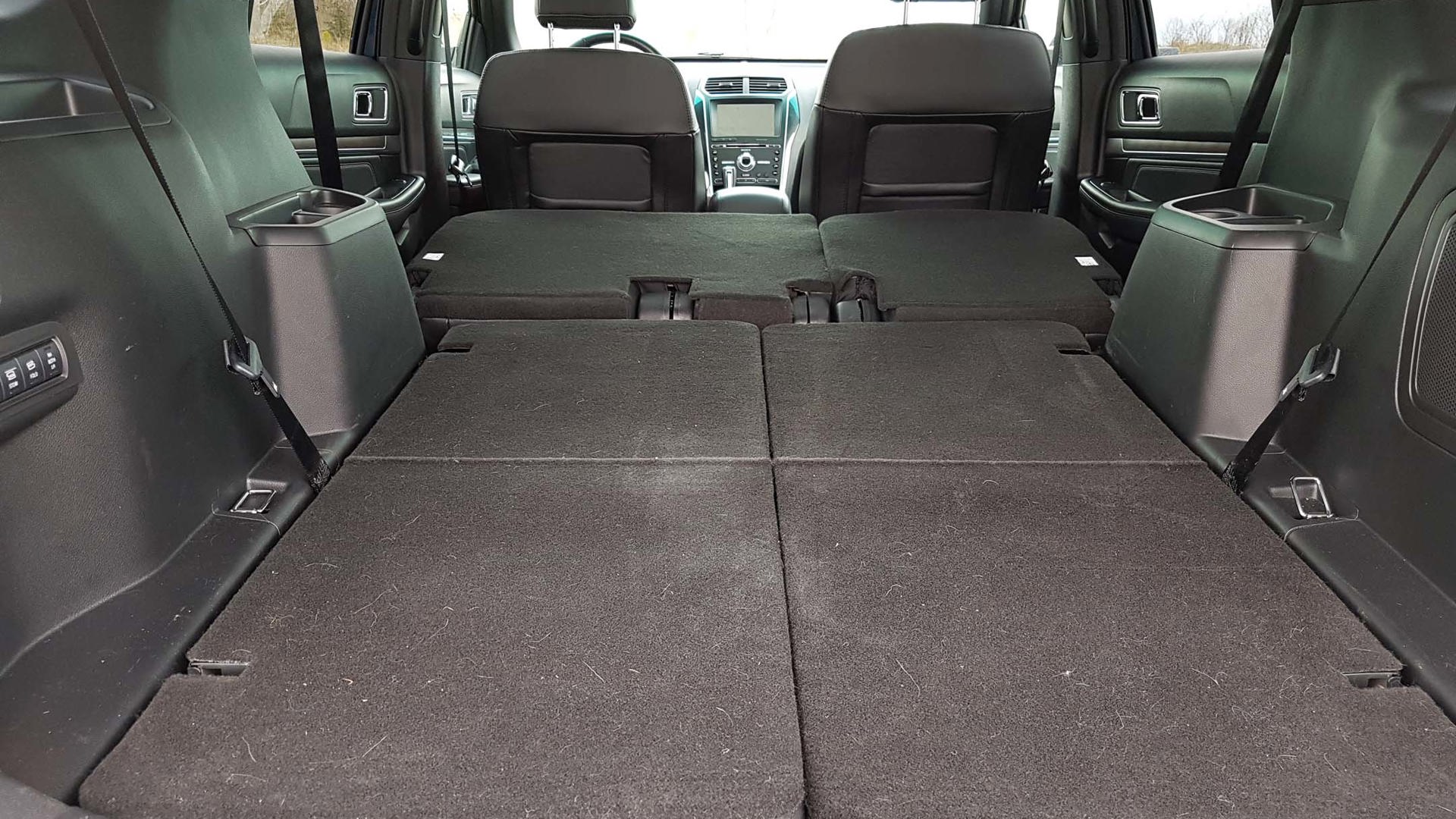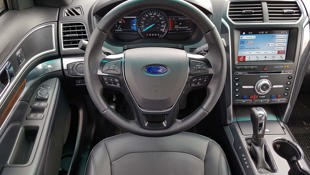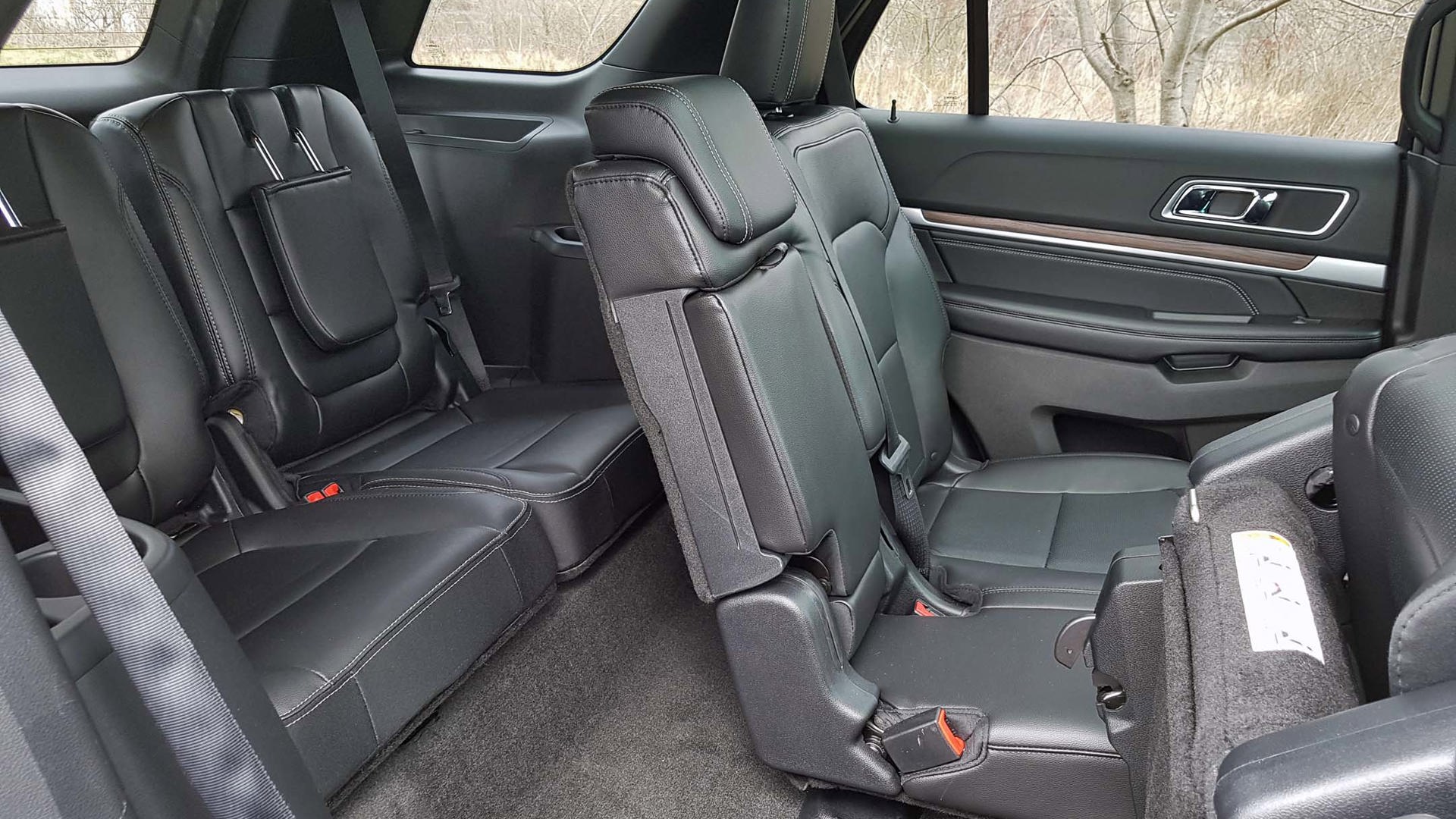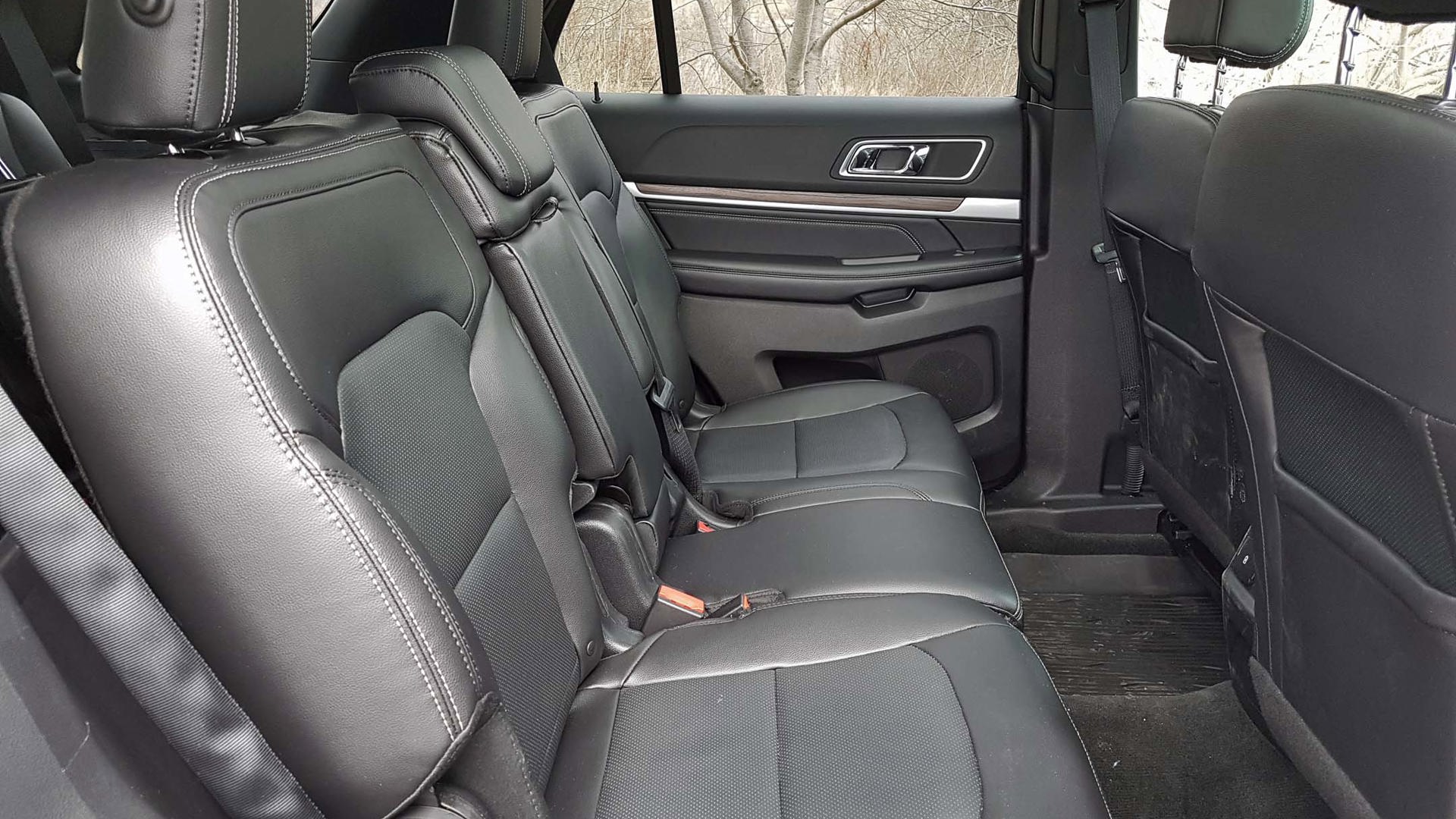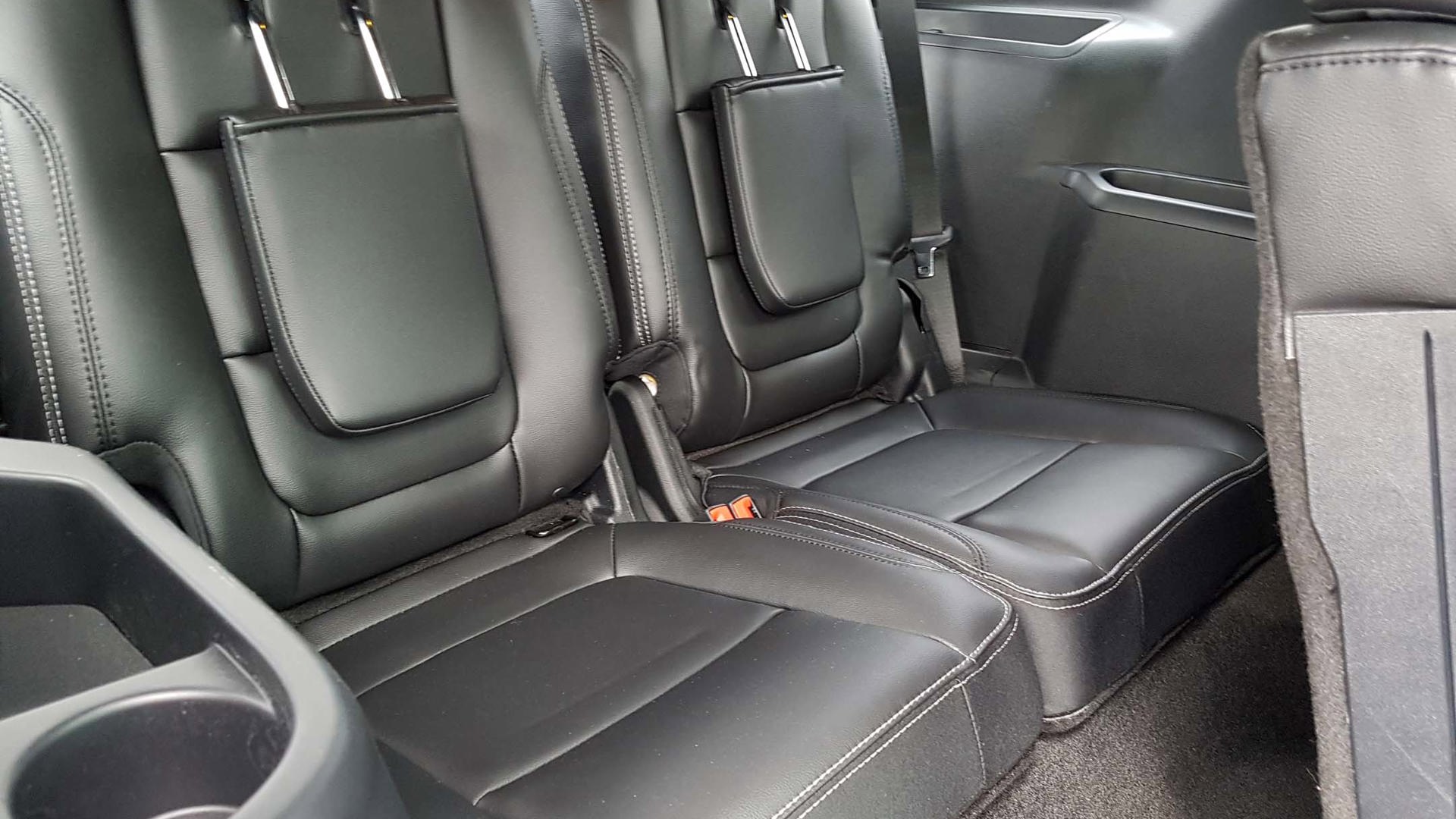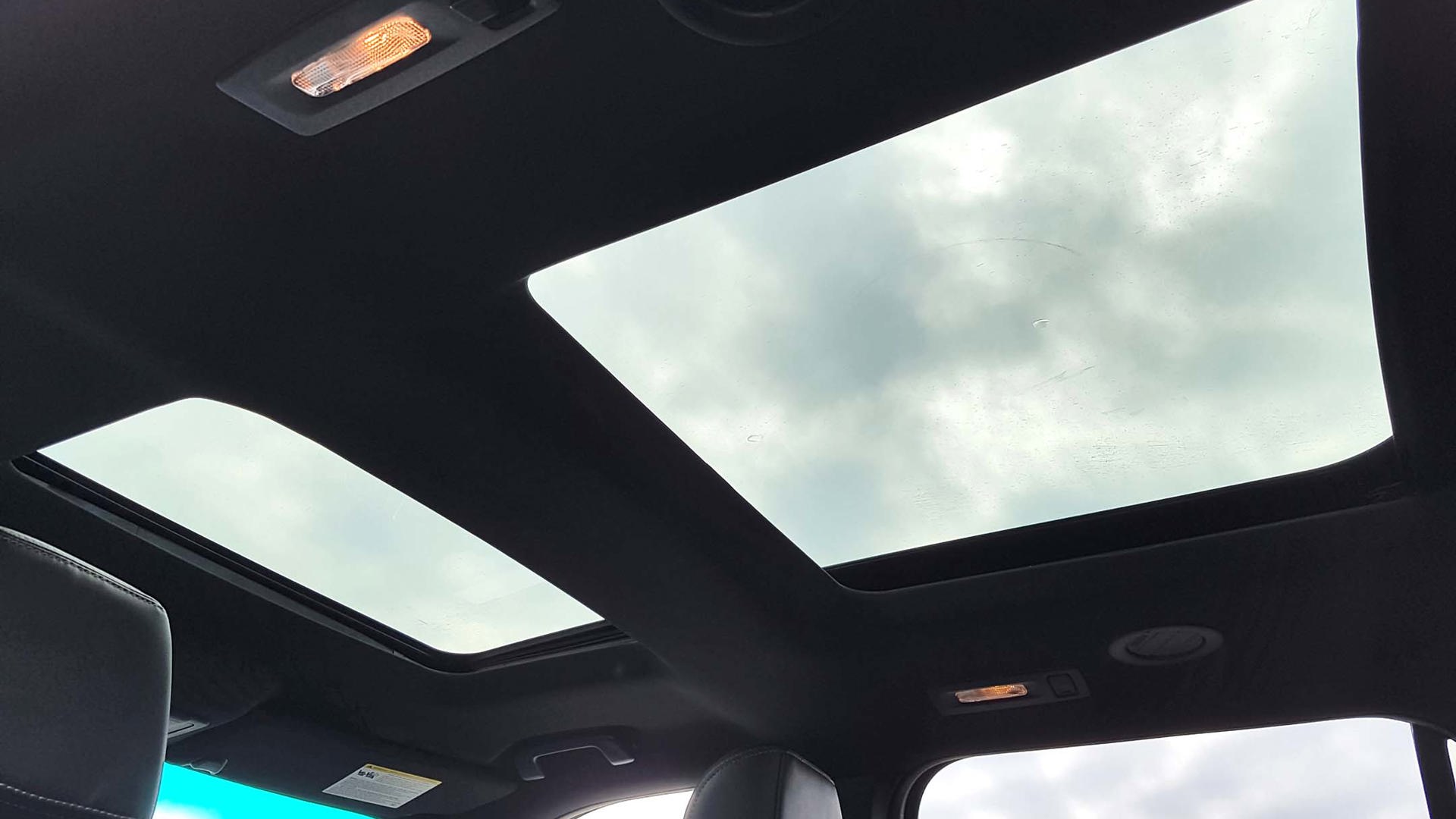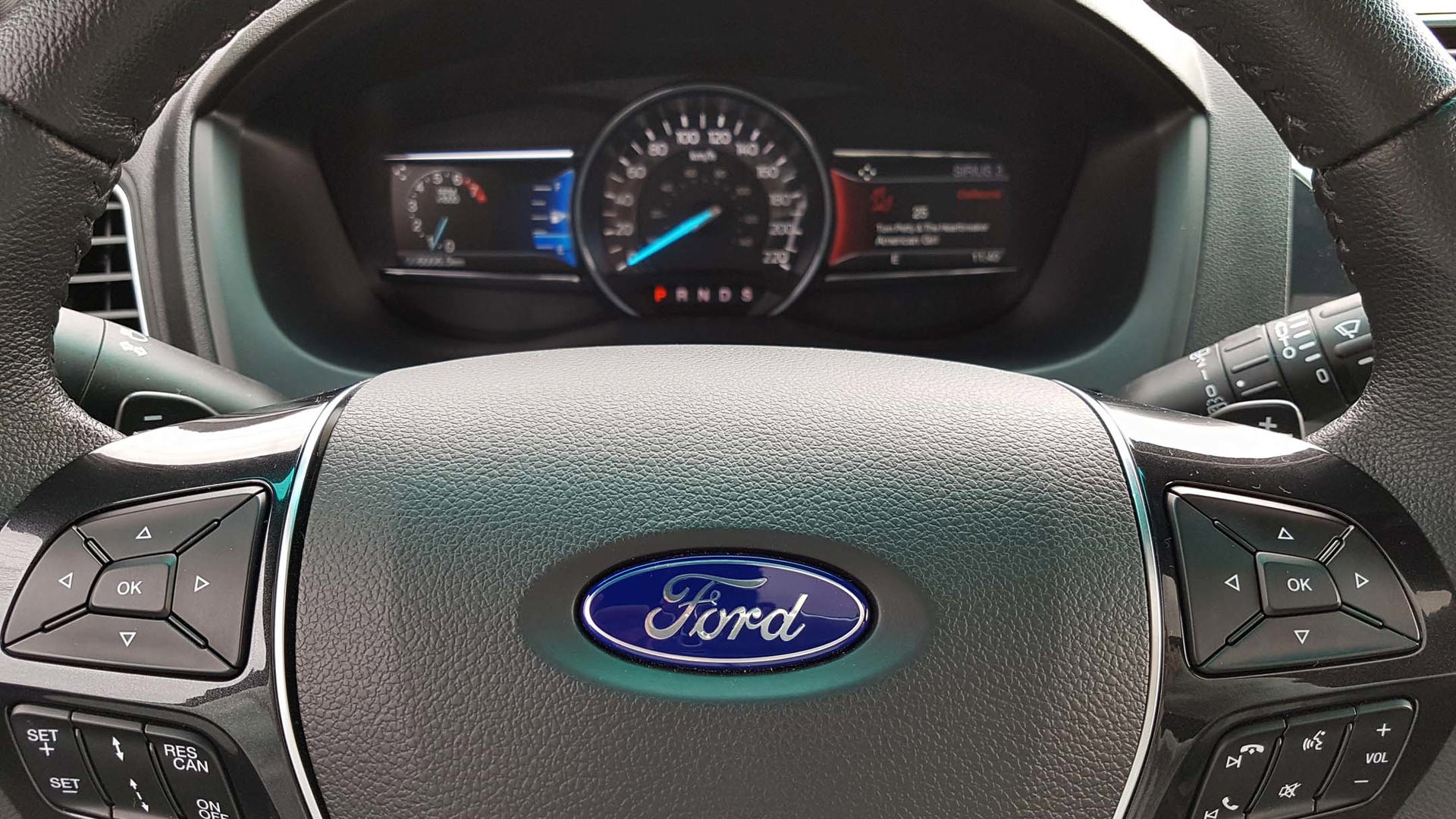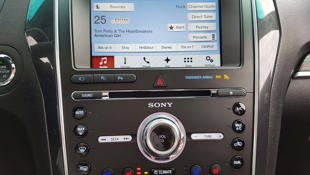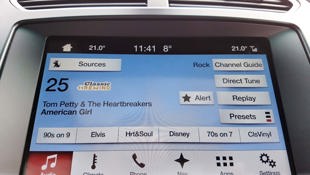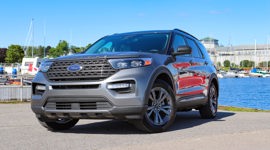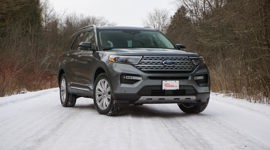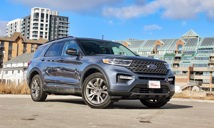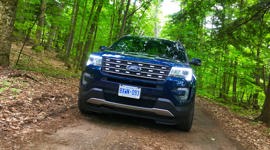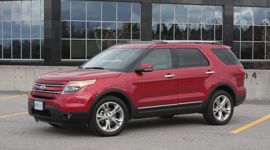 AutoTrader SCORE
AutoTrader SCORE
-
STYLING8/10
-
Safety8/10
-
PRACTICALITY7/10
-
USER-FRIENDLINESS7/10
-
FEATURES7/10
-
POWER7/10
-
COMFORT7/10
-
DRIVING FEEL6/10
-
FUEL ECONOMY8/10
-
VALUE7/10
The Ford Explorer celebrated its 25th birthday last year, and now as it pushes toward its 30th it keeps on trucking. In fact, the current generation alone has been rolling along since 2011. But Canadians don’t seem to mind: we keep buying them up like hotcakes, especially since the significantly refreshed 2016 model was released.
How does the Explorer fare today?
But with SUVs sitting on more of our driveways than ever and the field of competition growing ever wider, how does the Explorer fare today?
Well, better in some areas than others.
Exterior
The Explorer’s upright and distinctly truck-like appearance makes it a favourite among folks who would rather be seen driving a large vehicle, and the 2016 model year changes went a long way in making it much more attractive without making it too pretty. The upright headlamps, solid grille, and aggressively sculpted door stamping make it look muscular and brutish, which positions it as an outlier in a market full of sleeker and more flowing designs. That fact alone likely draws more people to the Explorer than would consider it otherwise.
I’m not generally a fan of the wrap-around rear window with the body-colour C-pillar, a legacy design element that has held on in American SUV styling. Generally, I find that longer side windows look nicer and are better for visibility. But in today’s Explorer, for some reason, the window treatment works. The matching slopes of the windshield and the C-pillar create a pleasant symmetry.
Powertrain
There are three engines available for the 2017 Explorer: the base naturally aspirated 3.5L V6, rated to make 290 hp at 6,500 rpm and 255 lb-ft of torque at 4,400 rpm; the 2.3L four-cylinder single-turbo EcoBoost that makes 280 hp at 5,600 rpm and 310 lb-ft at 3,000, which was the mill in this tester; and the 3.5L V6 twin-turbo EcoBoost that puts out 365 hp at 5,500 and 350 lb-ft at 3,500.
The naturally aspirated V6 is the standard engine all the way up the model line until you hit the top-tier Sport and Platinum trims. From the Limited trim all the way down to the base model, you can choose to keep the V6 or pay $1,000 to upgrade to the 2.3L I4 EcoBoost, which is the one equipped on this tester.
It kicks off an interesting discussion. For my driving style and preference, I found that the four-cylinder EcoBoost was a little too breathy under hard throttle for my liking and seemed to struggle to haul its own 2,015 kg around. For easy-going drivers who would use this far more often for getting groceries than traversing cottage roads, it might work fine. People in this latter group will appreciate the added benefit of excellent fuel economy for the class at 11.3 L/100 km combined with four-wheel drive versus 12.6 in the base V6. (This goes down even further to 10.8 with front-wheel drive, which is standard on the base and XLT models, but since we live in Canada this hardly seems worth mentioning.) I averaged 13.6 over my week with the EcoBoost, but I did a lot of city driving as well as some heavy-load highway driving.
Based on my experience with this engine – and without having driven the base V6 myself – I’d comfortably guess that most buyers considering this trim level will want to plan to make the upgrade. If what I said above resonated with you, the EcoBoost is the choice that’s going to check off all the right boxes.
For me, though, if I’m going to buy a big, trucky vehicle then I want it to drive like one, so I’d take the fuel economy bump up to 13.0 L/100 km and look straight to the larger EcoBoost engine. That would mean I’d either be shopping for the Sport or Platinum models. While both are attractive and nicely equipped, if my theoretical budget was capped at $60,000 then both choices would immediately price me out into looking elsewhere.
I also found the gearing in the six-speed automatic tended to hang out in gear a little long rather than kicking up or down as quickly as I would have liked. This goes back to the tuning for fuel economy, of course, and although the same gearbox is equipped on all models, the gearing is different for each engine, so this might not be as prominent in other configurations.
Drivability
I mentioned earlier that this is the SUV for people who want something truck-like, and that’s also how it drives. On city streets, it feels steady and planted. At highway speed, though, particularly on ramps, I found there was enough body roll to shake my confidence.
That said, parking it wasn’t nearly as difficult as I expected it to be. Rearward visibility isn’t stellar, but between the sizeable mirrors, the clear cameras, and the optional parking assist technologies equipped on this test model, getting in and out of tight spots hardly raised my blood pressure at all. However, I did make one urban sacrifice that week and skip making a trip to my favourite downtown grocery store, where I wasn’t sure the Explorer would be able to clear some of the turns in the extremely tight underground parking lot.
Interior
This is a tough subject because this is a topic where the Explorer truly excels in some areas and is significantly lagging behind its competition in others.
On the up side, the cabin is visually very attractive, and I found the optional front seats included in the 301A package to be extremely comfortable and easy to position in a way that works for me. They’re also heated and ventilated as standard in the Limited trim. The optional twin-panel moonroof, priced at $1,750, would be money well spent: it brings plenty of light into what would otherwise be a dark and cavernous cabin, and the option to cover the rearward side while keeping the front open is a great asset, especially since the covering is nice and dark for those times when you really need the little ones to nap already.
The back seats also go up and down in a way that’s intelligent. The third-row seats are button-controlled and can operate each side individually or both at the same time, and the full floor lies nice and flat when needed. I had to move a load of stuff that week, and seating my daughter on the 40 side of the 60/40 second row while dropping the rest of the seats allowed me to get enough stuff in there to cover the floor of a 9x9-foot room. I was impressed.
On the down side, if you expect to need to use the third-row seats more than occasionally, there are better options out there. Getting to them means unclipping and lifting a heavy second-row seat out of the way, and there’s not much room at all once you’re back there. With so many competitors now installing sliding second-row seats, some even capable of being moved with a car seat in place, this is one area where the Explorer is lagging far behind.
Connectivity
If it’s been a while since you’ve driven a Ford, Sync 3 will surprise you. It’s a robust and user-friendly infotainment system that works almost without needing a thought. In the Explorer, the button layout is nicer than in Ford’s smaller vehicles. It also comes with Android Auto and Apple CarPlay compatibility, but I greatly appreciated things like my phone automatically connecting and pushing through my text messages when I forgot to plug it in before leaving home.
The way that the instrument cluster can supplement the infotainment screen in this and other Ford products appeals to me a great deal as well. I love that I can have Android Auto running and still see what Sirius XM station I’m on and which song is playing. Because everything is digital and is configured the way it is, it’s not possible to see a tachometer and your fuel economy at the same time – but that’s a minor niggle.
About the only thing missing here is in-car Wi-Fi, which isn’t especially widespread yet. There’s nothing in the back seat of the Explorer to keep people busy, so if you’d rather have your teenagers eating away at your car’s subscription than the data in your mobile phone plan, consider a GM product. As far as the front seat goes, most people will be happy with what they find here.
Safety
At this trim level, getting the safety features buyers look for most requires adding on a $2,250 package. It includes a blind-spot information system with cross-traffic alert, active park assist, lane-departure warning and lane-keeping assist, rain-sensing wipers, auto high-beams, and inflatable rear seat belts.
This last feature seems to be available independently, which is good – they don’t work with all car seats, and while they do improve safety for older rear-seat passengers in a crash, some children find them uncomfortable and have trouble doing them up on their own. Do some research and consider your family’s needs carefully before making a decision on this feature.
The Verdict
Were I shopping for a three-row SUV, the Explorer’s cost to get into a powertrain I could live with long-term and difficult-to-access third row would send me shopping elsewhere. But if fuel economy is your higher priority, the Explorer’s attractiveness, front-row comfort, and connectivity are all worthy redeeming features.
| Engine Displacement | 2.3L |
|---|---|
| Engine Cylinders | 4 |
| Peak Horsepower | 280 hp @ 5,600 rpm |
| Peak Torque | 310 lb-ft @ 3,000 rpm |
| Fuel Economy | 13.1/9.2/11.3 L/100 km city/hwy/cmb |
| Cargo Space | 595 L / 1,243 L, 3rd row down / 2,314 L, 2nd row down |
| Model Tested | 2017 Ford Explorer Limited |
| Base Price | $48,899 |
| A/C Tax | $100 |
| Destination Fee | $1,690 |
| Price as Tested | $58,604 |
|
Optional Equipment
$7,915 – 2.3L I4 EcoBoost engine $1,000; 20" aluminum wheels $650; Equipment Group 301A (multi-contour front seats, active park assist, lane departure warning, lane keep assist, blind spot monitoring, rain sensing wipers, auto high beams, rear inflatable belts) $2,250; dual-panel moonroof $1,750; adaptive cruise control/collision warning $1,500; trailer tow package class II $500; dealer-installed rear bumper protector $115; all-weather floor mats $150
|
|
